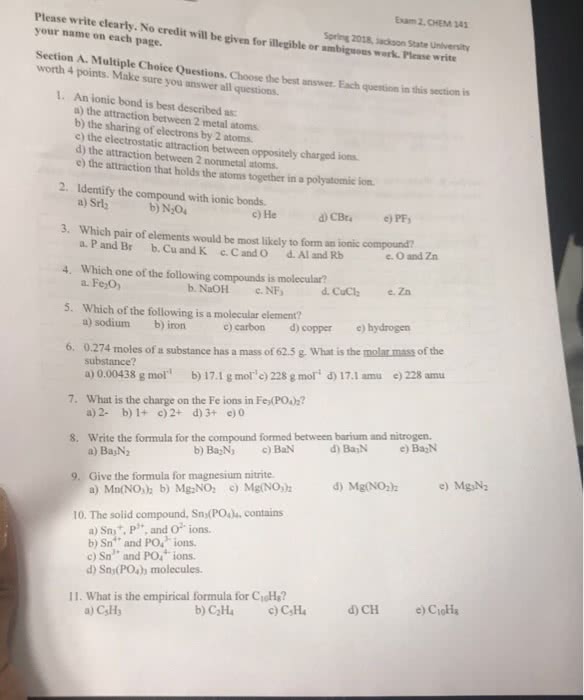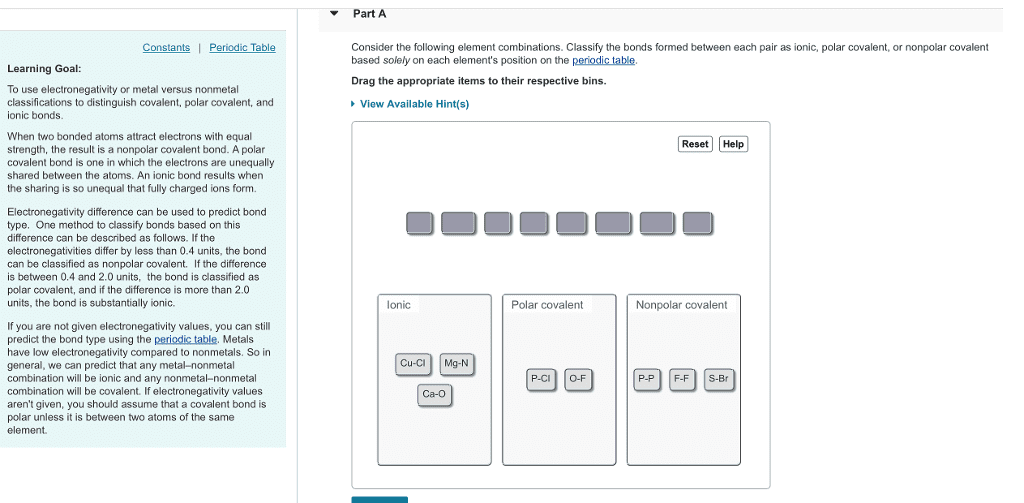CHE 1301 Chapter Notes - Chapter 3: Ionic Bonding, Chemical Equation, Empirical Formula
Document Summary
Compounds: elements combine with each other each with its own specific properties. When two or more elements combine to form a compound, an entirely new substance results. Chemical bonds: result of interactions between charged particles (electrons and protons) that compose atoms; forces that hold atoms together in compounds. Ionic: oppositely charged ions attracted to each other- electrostatic forces are responsible for chemical bonding. Form an ionic bond -> solid phase -> lattice (regular 3d array of alternating cations and anions) ex. One or more electrons are transferred from one atom to another, forming a cation and an anion. The two ions are then drawn together by the attraction between opposite charges. Covalent: occur between 2 or more nonmetals; the bonding atoms share electrons that interact with both nuclei; lowers potential energy; the covalently bound atoms compose a molecule. Each molecule is independent of the others (molecular compounds).



